Southern Baptist Leaders Can Either Open the Books or Kill the Cooperative Program. The Choice is Theirs. And Ours.
The Southern Baptist Convention is less transparent and less accountable to the churches that fund its gospel work today than it was before the 2025 Dallas Annual Meeting. This is an unfortunate reality, but I believe it is the fact of the matter.
The latest Cooperative Program giving report reveals how Southern Baptist churches are responding to the Platform’s latest refusal to open the books. Giving to the Cooperative Program in July is down six percent below budget. On the other hand, designated giving for the month increased from July of last year, but overall is 2.5% below 2024’s designated giving.
This combination marks the beginning of a slow but inevitable death spiral for the funding mechanism at the heart of the entire Southern Baptist Convention: the 100-year-old Cooperative Program.
Financial transparency advocates have repeatedly emphasized that Southern Baptists will not give to those they do not trust, and they will not trust those who are not transparent and accountable.
My efforts to secure 990-level financial transparency in the SBC over the last few years were undertaken for one reason and one reason alone: To help restore trust for the sake of our mission together. Those efforts were once again thwarted in Dallas, but the latest CP giving numbers suggest our crisis of confidence in the SBC continues unabated.
Yes, messengers raised their ballots and are therefore responsible for their actions. But Dr. Jeff Iorg, president of the Executive Committee, led them to dangerous decisions. If CP giving continues to plunge and the new Business and Financial Plan delivers the disastrous results I’ve warned about, future Baptist historians will point to one man: Jeff Iorg.
How We Got Here
In 2023, at the New Orleans annual meeting, I proposed an amendment to the Business and Financial Plan to require 990-level transparency—standard nonprofit financial disclosure, but without the requirement for IRS filings. The goal? Restore trust in the SBC by allowing churches and messengers to see how their Cooperative Program dollars are spent, thereby maximizing our mission to reach the whole world with the Good News of Jesus Christ.
That motion was referred to the Executive Committee for review, but the EC killed it before the 2024 Indianapolis meeting, promising instead to propose a plan to “enhance transparency” in Dallas.
In Indianapolis, I made a similar motion for 990-level transparency, revised to more explicitly protect missionaries (even though they were never in danger). Once again, it was referred to the Executive Committee. And once again, the finance subcommittee promptly buried it. Spot the pattern?
By February 2025, the Executive Committee unveiled its new Business and Financial Plan, crafted by staff and entity heads. They called it a step toward transparency. It wasn’t. It stripped messenger rights and entrenched financial obscurity.
However, by bringing this recommendation, the Executive Committee opened the door to what transparency advocates had been denied for years: A real opportunity for debate and a vote on 990-level financial transparency.
The Dallas Debacle
I went to Dallas with a single objective: To amend the proposed plan to include 990-level transparency. Because the plan came to the floor as an amendable motion, we needed only a simple majority to win—a rare opportunity compared to the two-thirds vote required to amend an existing plan. While I didn’t think my amendment was a lock to pass, I believed that transparency, an obvious good, could rally enough support after two years of advocacy, making a simple majority possible.
I was wrong.
While making the motion and securing a floor debate in public were significant steps forward, the result was a lopsided loss.
Some argue it was a mistake to attempt to amend the flawed Business and Financial Plan, suggesting we should have focused on defeating it outright. I respect this view, especially given the outcome of the vote, but I disagree. Pursuing 990-level transparency, even when the threshold was a simple majority, was the right move. That goal was my sole focus.
I hoped others would step up to oppose the Business and Financial Plan outright or push for other significant amendments. Perhaps naively, I assumed we’d have time for a robust debate on such a critical decision. But a messenger called the question on my amendment and the recommendation, and we quickly moved to vote on both my motion and the original plan.
This represented one of the few procedural missteps by moderator Clint Pressley. He should not have allowed the question to be called on the new Business and Financial Plan recommendation without having both “for” and “against” speakers in a debate. Yet, it was quickly voted on, messengers approved it, and we now await the fallout over the coming years.
Dissecting Dr. Iorg’s Misleading Arguments
During the debate on my amendment, Dr. Iorg spoke from the platform against it. His speech was a masterclass in misdirection. Let’s unpack his claims:
1. First Amendment Fearmongering. Iorg cited a decades-old court case, in which Southwestern Seminary won a ruling that protected it under the First Amendment from “such invasive reporting as is required by the 990.” He warned that voluntary disclosure signals subjection to federal oversight. This is nonsense. Disclosing financials to churches and messengers—convention stakeholders—has nothing to do with the federal government, let alone government control. It was a scare tactic, not an argument.
2. Invented Legal Conflicts. Iorg claimed that a 990-level disclosure would create legal conflicts between entities and the convention, stating that trustees have a duty of care and loyalty to the entity and must never act in any way that affects the entity’s mission. He said that my motion set up a conflict where trustees would have to choose between cting to please the Convention (i.e., messengers) or pleasing their legal responsibility to the entity.
While it is true that trustees have a fiduciary duty to the entity they serve, it is also true that they have a duty of stewardship on behalf of churches and messengers, as well as a degree of accountability to them.
Pitting the entities against the messengers was a favored tactic of the moderates who took over Baptist institutions in the 1980s and 1990s, and it’s disheartening to see the president of the Executive Committee resort to that strategy today.
The fact is that 990-level reporting introduces no legal conflicts between entities and the convention, or else we’d have all sorts of legal disputes between state Baptist universities and state conventions. Iorg’s claim lacks evidence—it was a fabrication meant to spook messengers.
3. Futility Fallacy. Iorg argued 990-level transparency is pointless because messengers can’t change anything with the disclosed financial information. At best, if messengers did not like a trustee’s decision, they could make a motion about it at the annual meeting, but that motion would be referred back to the trustees who made the decision in the first place. Therefore, the process is futile.
His accounting of the process may be accurate, but Iorg omitted the key benefit of transparency: public accountability for the trustees’ most fundamental decisions. My amendment did not intend to make messengers function like trustees, but to help trustees function like accountable trustees.
4. Salary Inflation Myth. Iorg suggested 990-level transparency would inflate entity salaries. Where’s the proof? If our entities pay their executives fairly, trustees should defend those numbers with confidence, not hide them. His insinuation—that some salaries are either embarrassingly low or exorbitantly high—only underscores the need for daylight.
5. Trustee Silence as Virtue. Iorg said my amendment motion was based on many myths about inflated salaries, other financial discrepancies, fraud, and other kinds of misuse. But since there is no outcry from the SBC’s 500+ trustees demanding 990-level transparency, these allegations must be unfounded and transparency unnecessary.
But trustee silence is precisely the problem. A trustee system that resists basic accountability only fuels mistrust and rumors of financial impropriety. Their indifference isn’t evidence of health, but the very problem we’re trying to solve.
6. Confusing Contrasts. Iorg claimed that SBC entities differ from most organizations that file Form 990s because of how our trustees are selected. Most of those organizations, he claimed, have self-selecting boards, but messengers choose our entity trustees. It’s unclear to me why that is meaningful. If anything, it strengthens the case for 990-level transparency because messengers deserve to have the information needed to evaluate the trustees they appoint.
Further, Iorg ignored the fact that state Baptist institutions, with messenger-elected trustees, file 990s without issue.
Dr. Iorg also boasted about the SBC’s 600 pages of reports, but this is not the flex he thinks it is. Instead, it only underscores the farce of it all because in over 600 pages, SBC entities still don’t disclose the bare minimum levels of financial disclosure that are standard for nonprofits.
Dr. Iorg ended his speech saying, “The processes of transparency in Southern Baptist life are more robust than outside of Southern Baptist life.”
I don’t know any other way to describe that statement than a falsehood. Southern Baptists need to grapple with the fact that the president of the Executive Committee stood on the platform and outright misled them.
The Cost of Iorg’s Plan
The hard reality is that messengers believed the misleading statements they heard from the Platform. They overwhelmingly rejected the 990 amendment and voted for the new unamended Business and Financial Plan. And it brings me no joy to predict that Southern Baptists will come to regret that decision.
The new Business and Financial Plan is a step backward. It replaced messenger rights with institutional assurances, making it more difficult for Southern Baptists to know how their missions dollars are being spent. It loosens fundraising rules, allowing entities to solicit non-Southern Baptist funds without reporting, creating competition with the Cooperative Program and the Baptist Faith and Message.
This echoes the moderate takeover of state institutions during the early 1990s, when entities began to drift from Southern Baptist oversight. By prioritizing institutional power over cooperative mission and convention accountability, the plan threatens the SBC’s unity and purpose.
Where Do We Go From Here?
Reform hinges on amending the Business and Financial Plan. The good news is that the plan can be amended at any annual meeting. At a minimum, I believe we need amendments to include 990-level transparency and to reinstitute fundraising restrictions. The challenge? Any amendment will require a majority vote to overrule referral to the Executive Committee and then a two-thirds vote to pass.
This makes transparency reform a turnout game. Pastors and laymen, your most powerful tool for change is mobilizing messengers to the annual meeting—messengers who won’t be swayed by institutional spin, who reject lies, and who refuse to vote against their own interests.
Until we get two-thirds of the Convention hall filled with such messengers of resolve and conviction, the SBC will continue along its path of managed decline.
And the Cooperative Program, one of the greatest mechanisms ever developed in church history for funding church planting, seminary education, and global missions, will slowly but surely decline and ultimately die.
Share This Story

